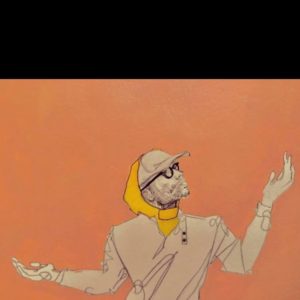By Barbara Hengstenberg
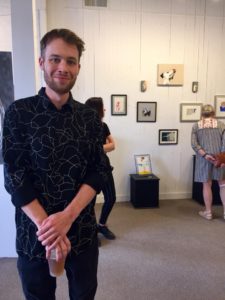
Jake Brower has been a fellow studio-mate and artist at NC Arts Incubator in Siler City, NC. Since my first meeting with Jake, I’ve been extremely impressed with this young artist. Not only is he a prolific painter and illustrator, he is a kind and compassionate human being. This makes him a great fit for our WildesArt community.
His introspective responses to my questions give us a deep understanding of his creative process.
WildesArt: Can you give us some background information on your art practice, education, etc.?
Jake Brower: My practice is compulsive and has always been about silently learning. In the day to day there are a great amount of things that seem, to me, like starting points. It isn’t a race, yet you can fall behind in a way. The sketchbook is a tool that I believe in using. Once a mentor of mine said to treat your sketchbook as an organism that can die and is dependent on everyday use to sustain its life. A day without sketching is a day that feels lost and on these days I’ve fallen behind in my own book. Graduating with a BFA in drawing and painting and minors in philosophy and comparative religion, I spent five years, from 2010 to 2015, filling my head with information that influences my process. A philosophy class I took helped confront this issue in that we spent the semester in a class of twelve people reading “What is Art?” first published for Tolstóy when he was 69 years old. My recollection of our analysis of this book reminds me to give up on any effort that contains false pretense. For Tolstóy an education in the arts is juxtapose to the practice of the arts in that the education distracts the visceral connection that is vital to a successful practice. It’s important to do what you have to do and not what you think you have to do, if that makes any sense.
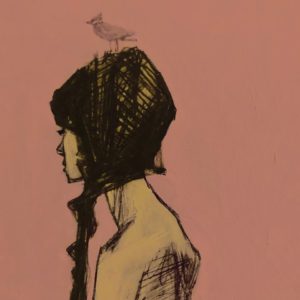
WA: What inspires you to create?
JB: If I’m on it how I aim to be, there isn’t anything that I would rule out as a past, present or future source of inspiration. The creative component that I feel I’m bringing is strange to try and get a hold of but somehow it comes naturally like a confidence in the design language I’ve cultivated and hope to continue cultivating every second of every day. This way of tuning into my surroundings has positioned my future to be a never ending education, as I see it. I’m grateful for my experiences at UNC Chapel Hill. A class in the Department of Religion on Buddhism taught the significance of finding a balance to reach a productive equilibrium of sorts. This made sense to me and influences how my education impacts my practice. Often, a source of catalytic inspiration is a result of connections made in college.
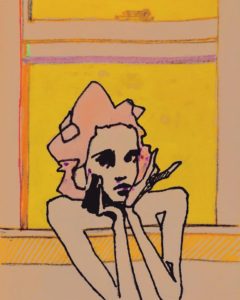
WA: Who inspires you to create?
JB: Anyone bold enough to let me in on a truth of any kind without rushing or forcing it my way.
WA: You seem to be prolific with your art. When do you find time to create?
JB: My sketchbook is my top priority and most anything I’m doing will stop at any point throughout the day for at least long enough to write myself a note and/or sketch of some kind for a “starting point” to use anytime I can get to silently work out whatever caught my attention until I feel like I understand it enough to move on for a while. It can be unhealthy to compulsively pursue the connections only made during the day while people are awake and around to interact with then pushing all of the studio hours into the night. Sometimes the sun comes up and it’ll be a surprise to me.
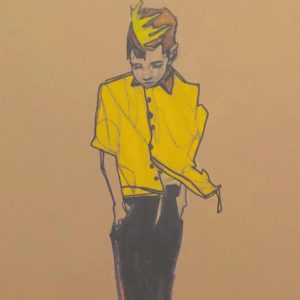
WA: Where do you prefer to create? Do you have a special space?
JB: While something else is being done… a bar or cafe more commonly than flying on a plane or riding a train but those kinds of things where you can be publicly anonymous and in your own world for a decent amount of time.
WA: What obstacles stand in your way?
JB: I’m the only thing in my way. Any thought that overwhelms my sense of gratitude for my surroundings, however long it does so, distracts from how my time is best used. Also, there’s an aspect of comfort that closes off growth. Jim Morrison is quoted with saying something about doors being a waste of time and this resonated with me as a visual for how my comfort zone is an obstacle that I actively try to overcome. You get through a door and the comfort zone has grown then you find another door and try to figure out how it opens but it’s never easy and looking back at the doors you’ve come through can be like having a window to how silly you were and how much time you spent behind each door.
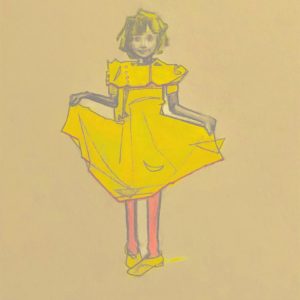
WA: Who do you admire artistically? Why?
JB: Anyone who can command my attention quietly because it’s hard to do without being loud and when it happens in my life I’m grateful.
WA: If you could sit down and talk with someone who inspires you, who would that be? What question(s) would you ask him/her?
JB: Not sure of who but I’d ask to play a game, kinda like “I Spy” but without any guessing, where we take turns looking around from where we sit and share what we see and how each of us relate as we see things. There’s a similar sentiment expressed by Thoreau that is something like, “It’s not what you look at that matters, it’s what you see.” To engage with anyone on that level where stream of consciousness gets to be the center of attention would be special.
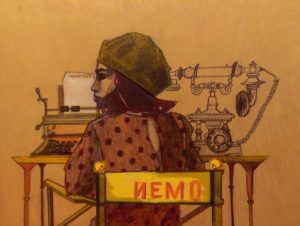
WA: You have a very unique style. How did you develop this graphic/illustrative/painting technique?
JB: Any drawing or painting that stands the test of time and has been rendered simply enough to be easily traced or copied always got me. It’s like the artist found the right lines to communicate with and did so before anyone else but for everyone else.
WA: What is your preferred medium with which to create a piece?
JB: Right now, pens are exciting. They’re easy to use and require focus to use well in a way that’s unforgiving — which I like about them.
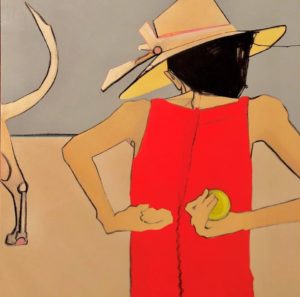
WA: How do you choose your subjects?
JB: Carefully! There’s a sensitivity to who you are that I feel is important in that there are plenty of subjects that would be dishonest for me to use though I may appreciate them tremendously. The people in my work usually remind me of some aspect of one of my immediate family members and, because that connection is there, the focus is on conveying whatever feels familiar with hopes for a viewer to connect to that regardless of who the subject is.
WA: You use a variety of items for “canvases.” How do you choose these items?
JB: Proximity! Anything that seems like it’s headed for the trash can at least be used as a sketchbook page. There’s something about using things that were being tossed out that maintains the idea of not letting the process become too precious.
WA: What gives you joy?
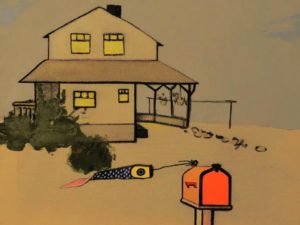
JB: Joy can be many things. The way water reflects light is always nice. However, it’s a different feeling than being around my sister. Both are joyful! There’s a kind of joy in doing something unexpected that I love. This could be found in things as simple as deciding what to wear.
WA: What would you like to do that you have not had a chance to do yet?
JB: Leave the country! Probably England or Ireland…maybe Iceland.
WA: What do you like to do in your spare time, when you’re not painting?
JB: Recently, I’ve found skateboarding to be rewarding. There’s potential for growth every time I do it. It’s also something that is like handwriting in that no two people do it exactly the same. This excites me.
WA: Where do you see yourself in 10 years? In 30 years?
JB: In 10 years, I’d like to at least have learned how to sew, painted a few murals and left the country multiple times. In 30 years, I really would love to be part of a family that doesn’t exist yet.
WA: What would you like readers to know about you?
JB: My mom is the coolest!
